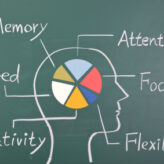Potential To Win

By looking at what a horse has done in recent races, and using that as a major factor in our betting decisions – we set ourselves up to make one of the most serious, yet most common mistakes we can possibly make as race players.
The discussion in the last post touched on this – the concept that most handicappers latch onto the most obvious and most recent data to ‘anchor’ their handicapping and decision-making. But unfortunately for our long-term bottom-line, the obvious is, well . . . obvious!
Which means it’s obvious to all the other handicappers and bettors out there – which means that information will be over-used and therefore over-bet – which then assures us of a steady stream of underlays if we are also making that info a major factor in our handicapping.
Certainly we are not oracles, and we don’t have crystal balls, and therefore must use what we do have; the published past performance data, our own collected data (the handicapping of our personal results), the visual appearance of the horse, and the money flow on the toteboard – as input factors for our handicapping and betting decisions.
But the main point here is that the astute handicapper needs to look for POTENTIAL.
How do we go about this – looking for potential?
Read More
Short Term – Long Term

Memory: Does the way our brains function serve to sabotage our efforts at handicapping and betting the races?
Since not many play this game at a consistently profitable level, what could be a reason for that? We all have almost identical brains, and after everything is said and done , and all the variations accounted for – we all have more or less the same potentials and capabilities.
It seems that the reason most fail to succeed to their hoped for levels of profit in this game – is a natural function of the brain itself. The way most of us actually think and remember is throwing a monster monkey wrench into the mix.
It’s a hurdle that can be overcome, but your betting success depends on identifying it, and making a concentrated effort to modify this natural tendency.
Read More

Recent Client Feedback